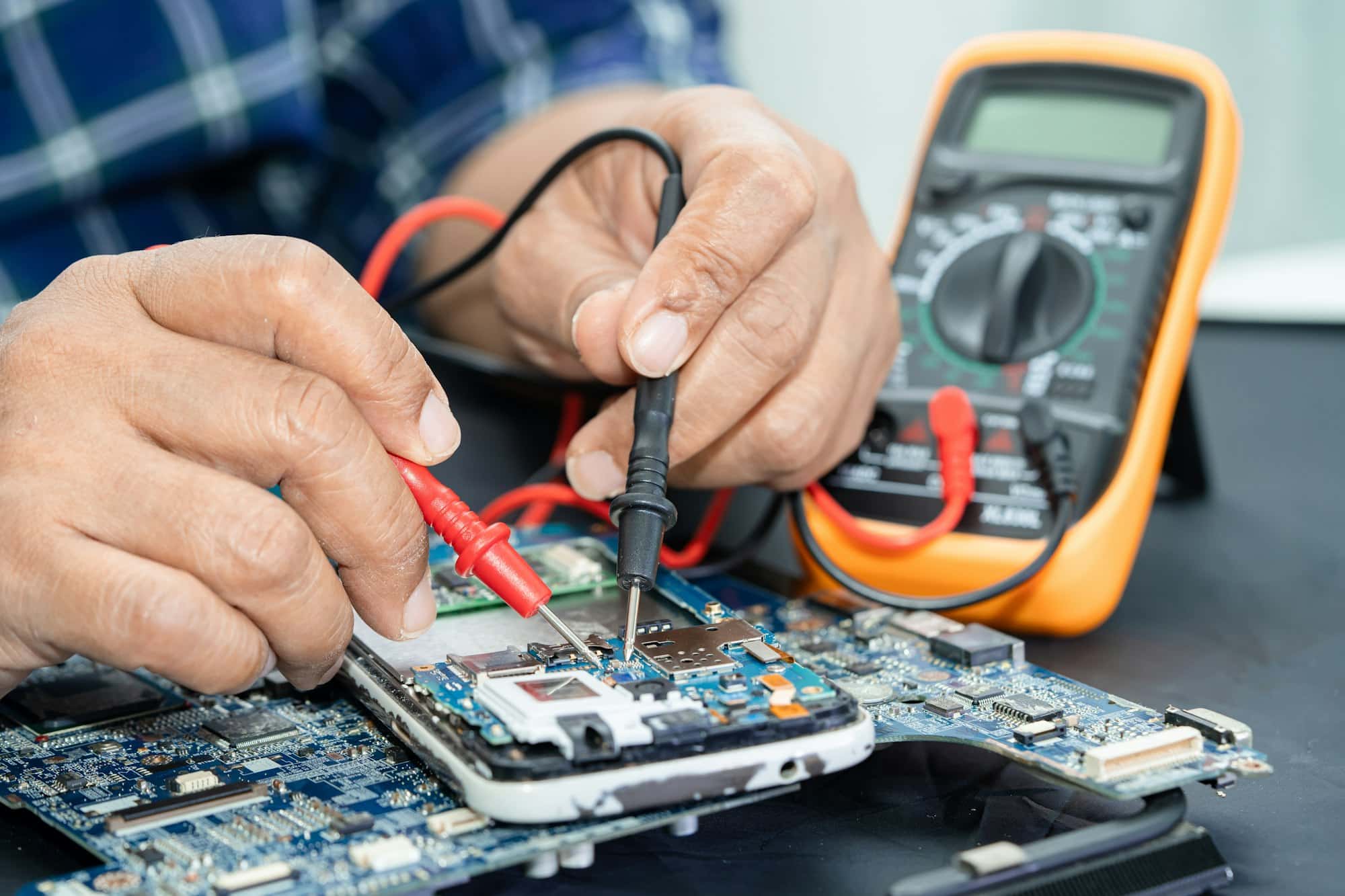What Are the Challenges and Solutions for E-waste Recycling in the UK?

As we progress further into the digital age, we must grapple with an ever-growing concern: electronic waste, or e-waste. Electronic devices have become intrinsic to our daily lives, but with rapid technology advancements, these devices become obsolete at an alarming rate. Consequently, e-waste has emerged as a critical issue for environmental management globally and in the UK specifically. This article will delve into the challenges and potential solutions to e-waste recycling in the UK, touching on health implications, materials involved, and the importance of sustainable and effective waste management.
Understanding the Scale of the E-Waste Issue
Before digging into the challenges and solutions, it’s paramount to comprehend the enormity of the e-waste issue. Across the globe, millions of electronic devices are discarded each year, and unfortunately, a significant portion does not find its way to recycling centres. This is a substantial environmental concern, given that these products contain a variety of potentially harmful materials.
A lire aussi : What’s the Role of AI in Streamlining UK’s Healthcare Appointment Scheduling?
Electronic devices are not simply "waste"; they are a complex mix of different types of materials, including metals, plastics, and glass. Many of these materials can be reused or recycled, but others, particularly some metals, are hazardous and pose potential health and environmental risks when not appropriately managed.
The Challenges of E-Waste Recycling
Perhaps one of the most significant challenges in e-waste recycling is the lack of visibility and understanding among people regarding the disposal process. Many consumers do not know how to properly dispose of their old devices. There is also a common misconception that old electronics are worthless, leading to inappropriate disposal methods that harm the environment and human health.
Sujet a lire : What’s the Latest in Geriatric Care Technology for UK’s Aging Population?
Moreover, recycling electronics is not a simple operation. The process involves separating the different components and metals present in the device, which requires specialised technology and facilities. The separation process is often costly, and the financial return from selling the recovered materials does not always cover the costs incurred.
Another challenge is the rapid technological advancement that renders devices obsolete quickly. This not only generates more waste but also complicates the recycling process, as newer devices often contain different materials that require distinct recycling processes.
The Role of International Cooperation in E-Waste Management
E-waste is a global problem that requires international cooperation. Recognising this, many countries have implemented national e-waste management strategies and are working towards more robust international regulations. The UK, for instance, has been an active participant in these efforts.
Nevertheless, international cooperation poses its own challenges. Implementing and enforcing regulations across different jurisdictions is a complex task, especially in countries where informal e-waste disposal is prevalent. Moreover, there is often a lack of consistency in regulations across countries, making it difficult to establish universally applicable standards and procedures.
Developing Sustainable Solutions for E-Waste Disposal
Addressing these challenges requires us to develop sustainable solutions for e-waste disposal. One approach is to increase public awareness and education about e-waste. People need to understand the importance of proper e-waste disposal and recycling, as well as the environmental and health risks associated with improper disposal.
Improving recycling technologies can also play a significant role in addressing e-waste. Advances in recycling processes can help to make the separation and recovery of materials more efficient and cost-effective. This could encourage more businesses and individuals to recycle their electronic waste.
Lastly, implementing more stringent regulations can help manage e-waste effectively. Strict laws can give companies an incentive to design products that are easier to recycle and have a longer lifecycle. Regulations can also ensure that e-waste is handled in ways that are safe for the environment and human health.
The Potential of Circular Economy Practices in E-Waste Management
In addition to the above solutions, embracing a circular economy approach to electronics can help tackle the e-waste problem. In a circular economy, products and materials are kept in use for as long as possible, and waste is minimised.
Companies can design products that are more durable and easier to repair, reducing the need for frequent replacement and decreasing the amount of e-waste generated. There’s also potential in refurbishing and reselling used devices. This not only reduces waste but also makes technology more accessible to those who may not be able to afford new devices.
While significant challenges remain in the management of e-waste, it’s clear that a combination of public education, technological advancement, stringent regulation, and circular economy practices can propel us towards a more sustainable future. The key is to remember that every electronic device has a lifecycle that extends beyond its use, and it’s our collective responsibility to ensure that lifecycle is as environmentally friendly as possible.
Effective Waste Management in the Supply Chain
An important place to begin addressing the e-waste problem is in the supply chain. Manufacturers and retailers play a crucial role in the lifecycle of electronic devices and, consequently, in waste management. Unfortunately, not all companies prioritize sustainability in their operations.
Effective waste management in the supply chain involves several key practices. One of these is ‘Extended Producer Responsibility’ (EPR), a policy approach that holds manufacturers accountable for the entire lifecycle of their products. By imposing responsibilities for waste disposal and recycling, EPR can push manufacturers to design electronics that are easier to recycle or dispose of safely.
Another notable practice is ‘Green Procurement’. This involves purchasing only products that meet certain environmental standards. Retailers, in particular, can leverage their buying power to encourage manufacturers to produce more sustainable products. This can also be extended to consumers, who can choose to support businesses that prioritize sustainable practices.
Equally as important is the implementation of efficient recycling systems within companies. This includes the proper collection, sorting, and recycling of e-waste, as well as the safe disposal of any unrecyclable materials. Here, companies can work closely with waste management firms and recycling centres to ensure that e-waste is handled responsibly.
Innovations in E-Waste Recycling Practices
In the face of growing e-waste generation, innovations in recycling practices have become considerably important. These innovations can help to make the recycling process more efficient, cost-effective, and environmentally friendly.
One exciting development is the use of hydrometallurgical methods in e-waste recycling. These involve using aqueous solutions to extract valuable metals from electronic waste. Unlike traditional pyrometallurgical methods, which use high temperatures and produce harmful emissions, hydrometallurgical methods are safer and more environmentally friendly.
There are also advancements in the field of ‘urban mining’, which refers to the extraction of valuable metals from e-waste. This can be a more sustainable alternative to traditional mining, which often involves significant environmental disruption. By effectively ‘mining’ our own waste, we can reduce the need for raw materials extraction, thereby minimizing our environmental impact.
Further, the evolution of artificial intelligence (AI) and robotics is changing the face of waste sorting. Automated systems can sort e-waste more effectively and efficiently than manual sorting, and can also improve worker safety.
Conclusion: The Path Towards Sustainable E-Waste Management
The challenges associated with e-waste recycling in the UK are certainly complex, but they are not insurmountable. The key to overcoming these challenges lies in the combined efforts of individuals, businesses, governments, and international bodies.
Education and awareness are crucial in changing our habits around electronic waste. As consumers, we must be cognizant of the lifecycle of our electronic devices and make efforts towards responsible disposal and recycling.
Businesses, particularly those in the supply chain for electronic devices, must take responsibility for the environmental impact of their products. This includes adopting sustainable practices, such as green procurement and extended producer responsibility.
Governments have an essential role to play in regulating e-waste and ensuring compliance. They can also encourage research into and development of more efficient and sustainable e-waste recycling technologies.
Finally, international bodies can help to mediate and facilitate global cooperation on e-waste management. By promoting consistent regulations and standards, we can tackle e-waste as the global issue that it truly is.
In the end, the path towards sustainable e-waste management will require a great deal of innovation, collaboration, and determination. But with concerted effort, we can indeed create a future where electronic waste no longer poses a threat to our environment and human health.
